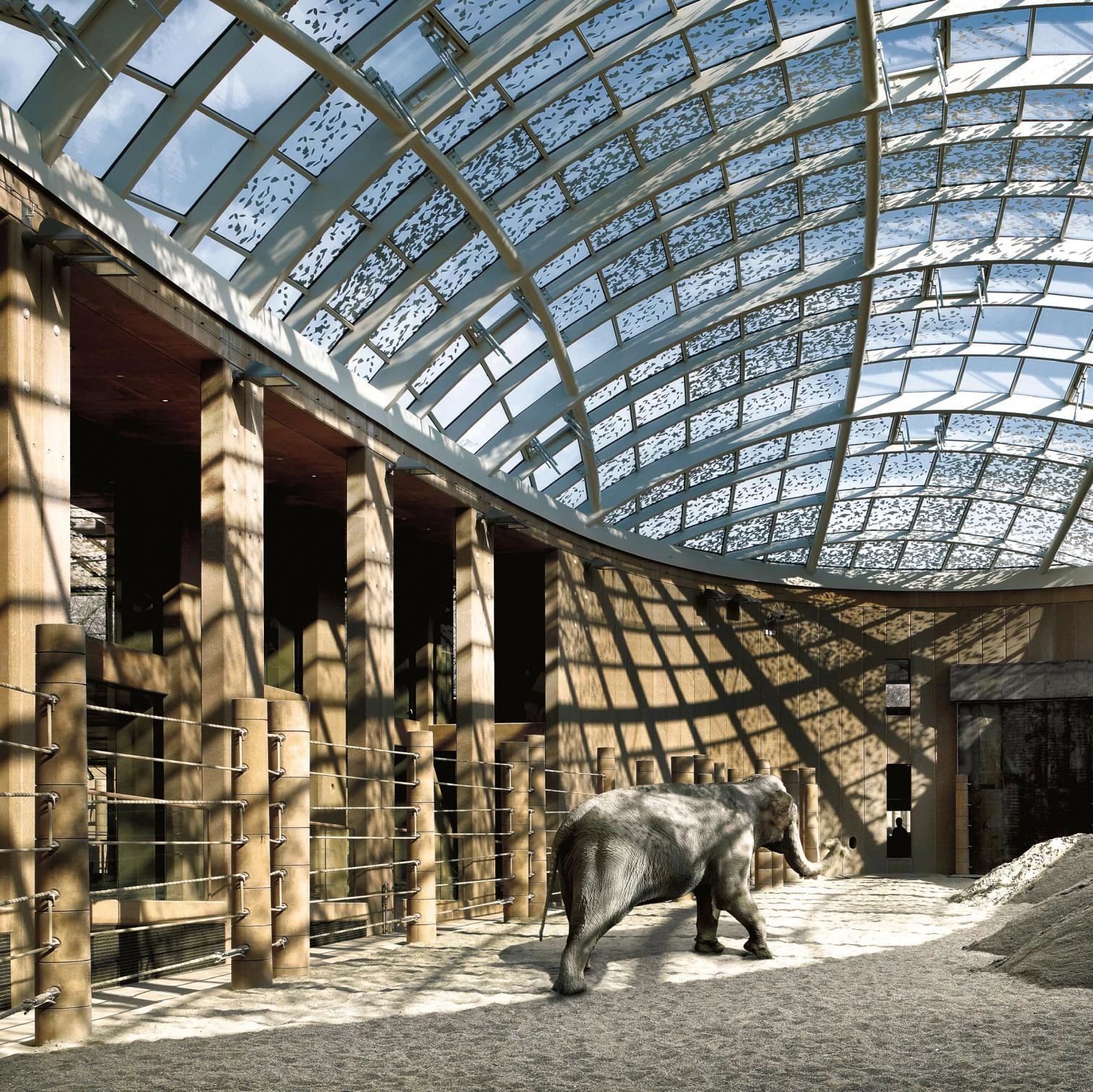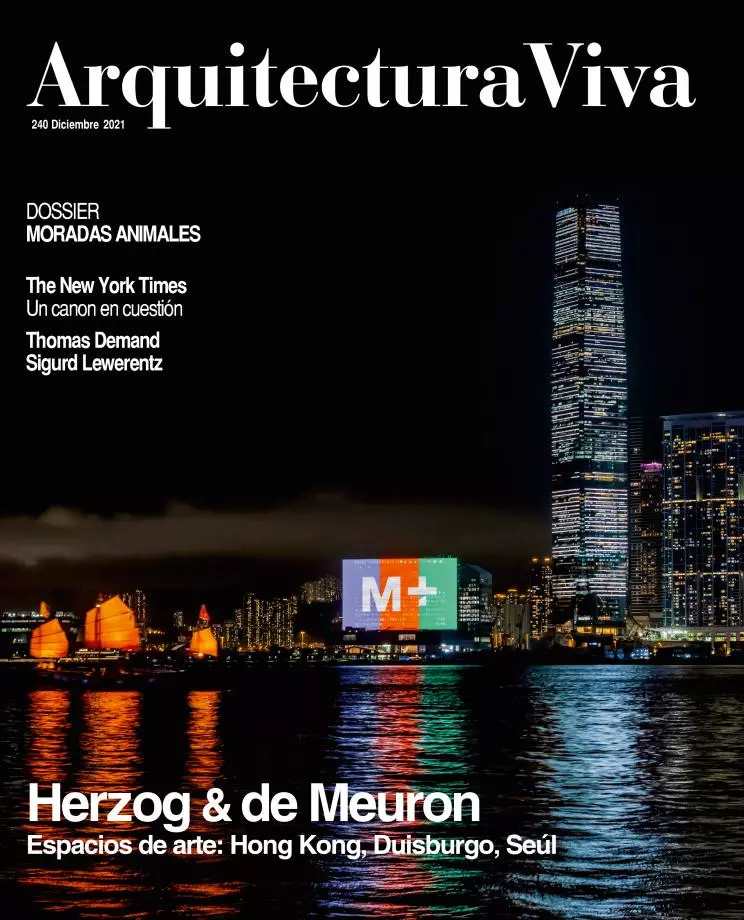Animal Dwellings
Non-human habitats

Erwin Heinle+Robert Wischer, Giraffe House, Dresden Zoo
Vitruvius wrote that where building is concerned, human beings owe much to animals, the hut and the cave being versions of more primitive architectures: the nest crafted by birds, and the burrow dug by mammals. This essential similarity has been acknowledged by architects and biologists alike, and there is an entire corpus of literature on animal abodes, ranging from The Prodigious Builders by Bernard Rudofsky and Animal Architecture by Karl von Frisch to Animal Architects by Juhani Pallasmaa.
But the matter of ‘animal architecture’ does not stop here. Parallel to our fascination with the spontaneous structures of non-humans is the interest in an ‘other architecture’ whose users are animals. Users we are unable to speak with, and we are unlikely to get any complaints from, if what we build for them is inadequate, but whose needs – highly specific, highly varied, highly demanding – warrant some kind of ‘other functionalism’: extrahuman functionalism. A functionalism of animal architecture whose origins are confused with those of menageries, which in imitation of sultans Europe’s Renaissance princes started to build on the grounds of their palaces, before they became banners for the ostentation of absolute monarchs, and later for the exhibition of the economic and pedagogical strength of bourgeois societies and their zoos, respectively. A functionalism later explored by those who intuited the programmatic and formal potential of this kind of architecture, from the Berthold Lubetkin who designed the Penguin Pool and the Cedric Price who built the Snowdon Aviary, both at London Zoo, to the Javier Carvajal of the Madrid Zoo-Aquarium.
These examples precede no less innovative, slightly disturbing ones conceived by Norman Foster, Bernard Tschumi, and Snøhetta (see Arquitectura Viva 206), and are complemented by four works which, arranged by the size of their particular occupants, have been selected for this issue’s dossier: a chicken coop at the Casa Wabi foundation (Mexico), by Kengo Kuma, composed of elegant lattices; the Educan canine school in Brunete (Madrid), by Lys Villalba and Enrique Espinosa, where dogs live with humans and birds in spaces defined by color; Shatwell Farm in Yarlington (United Kingdom), by Stephen Taylor Architects, a stoa of sorts for fifty cows; the stables in Lo Barnechea (Chile), by Matías Zegers, which take the shape of the primitive hut; and the Elephant Study Centre in Surin (Thailand), by Bangkok Project Studio, where concrete and brick create an ideal atmosphere for the coexistence of people and the long-nosed pachyderms.
Each of these sophisticated examples of animal functionalism is simultaneously a veritable manifesto of the aesthetic and constructive obsessions of its respective author. Human obsessions. Sometimes too human.

Foster+Partners, Elephant House, Copenhagen Zoo





